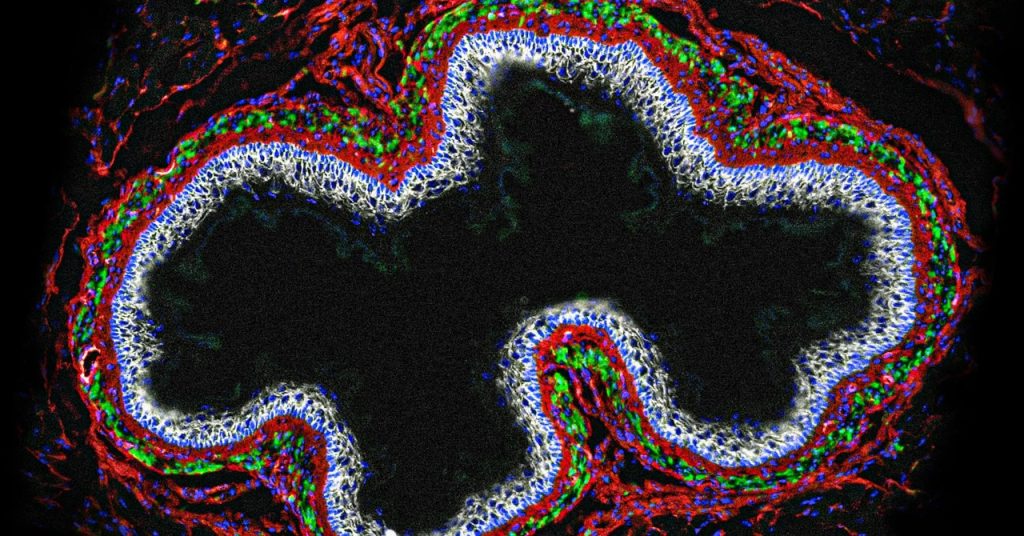Unveiling the Unsung Heroes of the Gut: Enteric Glia
From Overlooked to Overachievers
For a significant portion of the 20th century, glia in the brain were largely disregarded, viewed merely as the glue that occupied the spaces between neurons. While neurons were considered the primary drivers of thoughts, emotions, and actions through their electrical and chemical signaling, glia were relegated to the role of passive bystanders. However, in recent decades, this perception has undergone a dramatic shift, with glia shedding their identity as mere servants and emerging as active participants in brain function.
Unraveling the Diversity of Enteric Glia
When Marissa Scavuzzo joined the lab of Paul Tesar, a world-renowned expert in glial biology, she set her sights on deciphering the diversity of enteric glia. As the sole researcher in Tesar’s lab focusing on the gut rather than the brain, Scavuzzo often quipped with her colleagues that she was investigating the more intricate organ. Despite initial challenges in mapping individual cells in the gut, particularly in the duodenum where bile and digestive juices degraded RNA, Scavuzzo persevered and developed innovative methods to work with this delicate system.
Groundbreaking Discoveries: Hub Cells and Beyond
Scavuzzo’s tireless efforts paid off when she and her team discovered six new subtypes of enteric glia in the duodenum, as reported in a preprint paper on Biorxiv.org in June. Among these subtypes, “hub cells” stood out as a particularly intriguing finding. These cells, equipped with long processes, are strategically positioned to detect mechanical forces in the gut. As Vassilis Pachnis, head of the nervous system development and homeostasis laboratory at the Francis Crick Institute, explains:
It’s a wonderful piece of work.
Hub cells are just one of many glial subtypes that play functional roles in the gut. With Scavuzzo’s six new subtypes added to those characterized in previous research, a total of 14 known subgroups of glia have been identified across the duodenum, ileum, and colon. As research progresses, it is anticipated that more subtypes will be discovered, each offering new insights into the workings of digestion and potential avenues for treating various gastrointestinal disorders.
The Gut-Wrenching Truth: Glia’s Role in Gastrointestinal Diseases
Gastrointestinal diseases often come with a side of pain, in addition to disruptive digestive issues. Whether it’s consuming the wrong food or overindulging in the right one, stomachaches are a common occurrence. These gut feelings are orchestrated by enteric nerve cells, including glia. Given their newly discovered role in regulating immune cell activity, glia are suspected to be involved in numerous gastrointestinal disorders and diseases, making them promising targets for therapeutic interventions.
Pachnis and his team have found that glia are among the first responders to injury or inflammation in the mouse gut, and that tampering with enteric glial cells can trigger an inflammatory response. In the gut, glia appear to take on roles akin to true immune cells, and their dysfunction can contribute to chronic autoimmune disorders and inflammatory bowel diseases, such as ulcerative colitis and Crohn’s disease. As Pachnis states:
Glial cells definitely play a role in the initiation, the pathogenesis, and the progression of the various diseases of the gut.
Scavuzzo echoes this sentiment, emphasizing the potential for different glial subtypes to function differently or malfunction in a wide range of diseases and disorders where motility is affected. Glia have also been implicated in neural inflammation, organ hypersensitivity, and even neuron death.
Glia: The Gut’s Gatekeepers and Pain Mediators
Healthy glia play a crucial role in fortifying the intestines’ epithelial barrier, a cellular layer that keeps toxins and pathogens at bay while absorbing nutrients. However, in patients with Crohn’s disease, glial cells fail to function properly, resulting in a compromised barrier and an inappropriate immune response.
Recent research by Brian Gulbransen and his team has revealed that glia contribute to gut pain by secreting molecules that sensitize neurons. This is likely an adaptive response aimed at drawing attention to harmful substances for elimination, but it comes with the side effect of pain. These findings, published in Science Signaling, suggest that targeting glia could help alleviate pain associated with inflammatory gut disorders.
Glia themselves can also become stressed due to genetic issues, exposure to metabolites from the microbiome, poor diet, or other factors. Fatemeh Fattahi has observed that stressed enteric glia can influence the entire tissue, sometimes even damaging nearby neurons or recruiting immune cells, leading to further inflammation and pain.
A Bright Future for Gastrointestinal Research
The recent advancements in understanding enteric glia are poised to revolutionize the way researchers approach and treat gastrointestinal disorders. As Keith Sharkey, a prominent researcher in the field, notes:
I’m really excited to see how these cells have evolved to become central figures in enteric neurobiology over the years.
It is becoming increasingly evident that neurons do not act alone in the enteric system. Instead, they have glia as their beautiful partners, enabling them to function in the most efficient and effective manner.
Original story reprinted with permission from Quanta Magazine, an editorially independent publication of the Simons Foundation whose mission is to enhance public understanding of science by covering research developments and trends in mathematics and the physical and life sciences.

6 Comments
Cobalt: Turns out, trusting your gut isn’t just an idiom, it’s a science lesson in disguise!
Who knew our guts could be so brainy, right? Time to listen to that ‘gut feeling’ a bit more seriously!
Julian L. Turner: Seems our bellies aren’t just about food anymore; they’re pondering life’s mysteries with us!
Oh, so now our stomachs are throwing in their two cents in decision-making? Wild times!
Brains in our bellies? Next, they’ll be telling us our toes make great philosophers!
Stomachs with thoughts? Guess it’s time to consider those “gut feelings” as intellectual advice!